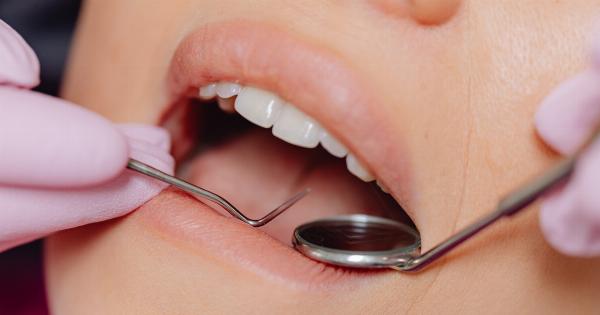When it comes to healthcare, patients rely not only on the knowledge and skills of their doctors but also on the way they communicate with them.
Good communication between doctors and patients can improve treatment adherence, satisfaction, and health outcomes. On the other hand, poor communication can lead to misunderstandings, medical errors, and even patient harm. In this article, we will explore the power of words in healthcare and how doctors’ communication impacts patient outcomes.
What is Good Communication in Healthcare?
Good communication in healthcare refers to a two-way process of exchanging information between the doctor and the patient, with the aim of achieving mutual understanding and trust.
It involves not only the spoken words of the doctor but also their tone of voice, body language, and responsiveness to the patient’s concerns and questions.
Some of the key elements of good communication in healthcare include:.
- Active listening: paying attention to the patient’s words, nonverbal cues, and emotions, and acknowledging their concerns
- Empathy: understanding and showing compassion for the patient’s situation and feelings
- Respect: treating the patient as an individual with unique needs and values, and involving them in all decisions related to their care
- Clear and concise language: using jargon-free and easily understandable terms to explain medical conditions, treatments, and risks
- Collaboration: working with the patient, their family, and other healthcare professionals to ensure coordinated and integrated care
The Benefits of Good Doctor-Patient Communication
Effective communication between doctors and patients has been shown to have many benefits, including:.
- Improved adherence to treatment plans: when patients understand their condition, treatment options, and the rationale behind them, they are more likely to comply with the recommended regimen and achieve better outcomes. Moreover, when doctors involve patients in decision-making, they feel more empowered and motivated to take an active role in their care, which can lead to better self-management and disease control.
- Increased patient satisfaction: when patients feel heard, understood, and respected by their doctors, they are more likely to be satisfied with their care, even if the outcomes are not optimal. Good communication can also reduce patient anxiety, fear, and discomfort, and foster trust and confidence in the healthcare system as a whole.
- Reduced medical errors and malpractice claims: miscommunication between doctors and patients, or among healthcare providers, is a common cause of medical errors, adverse events, and malpractice claims. By improving communication, doctors can minimize the risk of such incidents, and enhance their own accountability, transparency, and credibility.
- Improved health outcomes: several studies have shown that good communication between doctors and patients can lead to better health outcomes, such as lower blood pressure, fewer hospitalizations, and improved mental health. This may be due to various factors, such as increased treatment adherence, better symptom management, and stronger patient engagement and motivation.
The Consequences of Poor Doctor-Patient Communication
Conversely, poor communication between doctors and patients can have serious consequences, such as:.
- Delayed or missed diagnoses: when patients do not report their symptoms accurately or are not understood by their doctors, the diagnosis can be delayed or incorrect, which can lead to further complications and even death in some cases. This is particularly relevant for patients with chronic or complex conditions, who require ongoing monitoring and coordination of care.
- Medical errors and adverse events: miscommunication between doctors and patients, or among healthcare providers, can result in medication errors, wrong-site surgeries, and other preventable harm to patients. These incidents not only cause physical and emotional harm to patients but also erode their trust in the healthcare system and increase the burden on healthcare providers.
- Increased healthcare costs: poor communication can lead to unnecessary tests, treatments, and hospitalizations, which not only waste healthcare resources but also expose patients to risks and discomfort. Moreover, patients who are dissatisfied with their care may seek second opinions or abandon their treatment altogether, which can lead to further costs and complications.
The Role of Technology in Doctor-Patient Communication
In recent years, technology has played an increasingly important role in doctor-patient communication, by providing new channels and tools for interaction and information exchange.
Some of the most common technological innovations in healthcare communication include:.
- Email, text, and messaging: Many doctors now offer email or text messaging services to their patients, which can facilitate quick and convenient communication, especially for non-urgent issues or follow-up visits. However, these channels require careful monitoring and security measures, to ensure privacy and confidentiality.
- Telemedicine: Telemedicine refers to the use of video conferencing or other remote technologies to provide medical consultations, diagnoses, and treatments. This can be particularly useful for patients in remote or underserved areas, or those with mobility or transportation issues. However, telemedicine also poses challenges in terms of reimbursement, licensing, and quality control.
- Online patient portals: Many healthcare organizations now offer online portals that allow patients to access their health records, test results, and other medical information, as well as communicate with their doctors, schedule appointments, and refill prescriptions. These portals can enhance patient autonomy and engagement, but also require adequate training and support.
- Chatbots and virtual assistants: Chatbots and virtual assistants are AI-powered programs that can interact with patients using natural language processing and machine learning. They can provide information about medical conditions, symptoms, and treatments, as well as answer common questions and offer guidance on self-care. However, their accuracy and reliability depend on the quality of their programming and training.
Conclusion
In conclusion, good communication between doctors and patients is essential for achieving optimal health outcomes, patient satisfaction, and quality of care.
It requires doctors to listen actively, show empathy, and use clear and concise language, while respecting patients’ autonomy and collaborating with them and other healthcare providers. Poor communication, on the other hand, can lead to delays, errors, harm, and higher costs, and undermine the trust and credibility of the healthcare system.
Thus, doctors and healthcare organizations should invest in improving their communication skills and adopting suitable technologies, to ensure that words remain a powerful tool for healing and helping patients.























